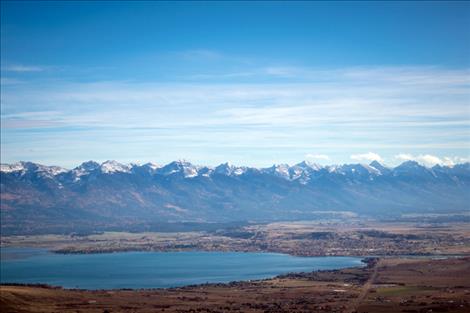Flathead Lake due for a Tsunami
Hey savvy news reader! Thanks for choosing local.
You are now reading
1 of 3 free articles.
Adapted from an
article by Tom Bansak, Research Scientist, Flathead Lake Biological Station
YELLOW BAY — Did you know that a tsunami is possible in Flathead Lake? According to the Bio Station’s physical lake ecologist, Dr. Mark Lorang, yes, it is in fact possible.
There is a geologic fault on Flathead Lake’s east shore along the Mission Mountains due to the lake bottom dropping in relation to the mountains. This fault results in periodic earthquakes, most of which are very minor.
Back to tsunamis … a tsunami is like throwing a rock into a calm pool – the energy moves out as a ring of waves. They can result from landslides (above or below water) or down dropping, all of which can be associated with earthquakes.
If there were major movement along the Mission Fault, waves of water would travel across the lake (West Shore problem), and then slosh back and forth (everyone’s problem). The size of the earthquake, down dropping or landslide would determine the size of the waves.
In the ocean, this would be called a tsunami. In the lake, it is technically considered a seiche. Large earthquake-caused tsunami or seiche waves are larger than storm waves and able to move large rocks further inland.
Mark Lorang has researched waves and their ability to move sediments and erode the lake’s shoreline. Our area’s strongest storms and largest, most powerful waves occur in the late summer and early fall when the lake is at full pool. This is when most of the shoreline erosion takes place.
Property owners do not much like shoreline erosion, and so many different preventative techniques have been used over the years. Traditional methods such as sea walls and riprap of large rocks, (or old car bodies once upon a time), may stop erosion locally, but they do not solve the overall problem. This is because hard structures such as sea walls do not dissipate or eliminate the wave energy that causes erosion; they just reflect that energy back across the lake to the opposite shore. The waves continue along the sea wall until they encounter a neighbor’s natural shoreline, which then erodes (at times dramatically).
Mark’s research on Flathead Lake has provided an alternative: constructed beaches. Soft structures such as beaches provide both shoreline protection and ecological benefits. Beaches are able to decrease the erosive power of waves, because as a wave breaks on a beach, the wave energy moves the particles (sand, gravels and cobbles), dissipating erosive energy.
Scientifically determining the size, direction and power of the waves allows for the proper design (particle size, beach orientation) of constructed “dynamic equilibrium beaches.” For decades now, Mark has worked with a variety of cooperators (including US Fish and Wildlife Service, Montana Fish, Wildlife and Parks, Confederated Salish and Kootenai Tribes, City of Polson, Flathead Lakers, and private landowners) to design, construct and examine the success of these beaches. Thousands of feet of sea walls have been replaced with dynamic beaches on all of Flathead Lake’s shoreline.
A prominent example is Flathead Lake’s North Shore. Since the construction of Kerr Dam in 1938, higher than natural lake levels in the late summer resulted in the erosion and retreat of the shoreline by nearly two miles. State and federal agencies wanted to prevent further erosion and protect remaining habitat. To do this, at one point during the 1990s, there was a plan to build a sea wall across three plus miles of the North Shore. Not only would this have just bounced the erosive power of waves back across the lake, but also a sea wall would have eliminated any natural connections between aquatic and terrestrial organisms and ecosystems. Instead, after seeing the success of the North Shore’s first experimental beach, constructed by Mark in 2005, the management agencies asked Mark to help them construct 2.5 miles of gravel beaches in 2008. Since then beaches have prevented further erosion and restored wetland, aquatic and terrestrial habitats. On top of that, it was $6 million less expensive than building a sea wall across the North Shore.
Yet, none of this even takes into account aesthetics or human enjoyment. Personally, I prefer to sit on a beach, getting my feet wet and tossing rocks into the lake than sitting perched up on a sea wall. Beaches are an inviting transition between land and water as opposed to an obstacle or barrier. But you should look for yourself. Go visit the North Shore, or Finley Point State Park, or Salish Point in Polson, as these are all public areas where Mark has constructed dynamic equilibrium beaches.
















